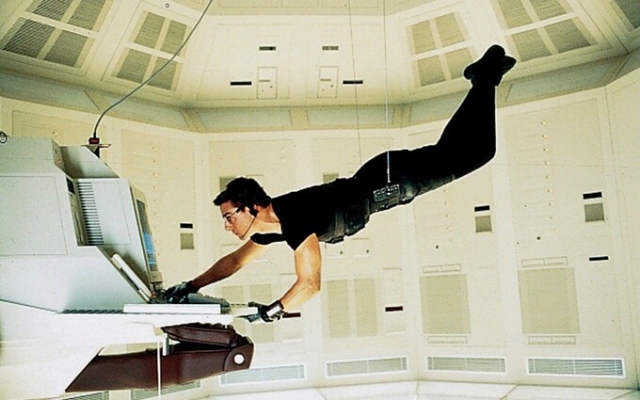 Tom Cruise in Mission: Impossible Credit: Alami
Tom Cruise in Mission: Impossible Credit: Alami
For the most famous scene in the first Mission: Impossible movie, in which Tom Cruz hangs from the ceiling during a daring robbery of the CIA headquarters — the filmmakers consulted with advisers from the real CIA. As producer Paula Wagner explains: “A lot of research has been done – every imaginable movie, book, idea and concept. An in-depth analysis of the special services was carried out.”
In the film, Cruise's missing spy, Ethan Hunt, must break into a high-tech computer vault and steal a highly secret file. Screenwriter David Koepp recalled asking the CIA what the real defenses would be in such a situation. To which they replied, uh, a security camera and a security guard somewhere in the room watching the security cameras—the same level of security you would reasonably expect in the nearby Tesco metro. «Let's just make up our own shit, this is not a documentary!» Koepp recalled what he said to director Brian De Palma while telling the story on the Light the Fuse podcast.
Indeed, they have come up with their own defenses: retinal and voice scans, several security cards, and alarm systems inside the vault that are triggered by the slightest increase in temperature, noise or pressure on the floor — even a drop of sweat dripping from Tom's face. It is designed not only to guard the vault, but also to escalate the ever-growing tension. (See also: a rat in an air vent; a dropped knife — both threaten to betray the game.)
Despite all of Cruise's mind-blowing stunts in the M:I sequels, including the latest Mission: Impossible — Death Worth, the CIA heist is still the show's most memorable moment. It's also the closest thing to a 1966-1973 television series: a seemingly impossible mission accomplished through complex planning, cunning subterfuge, and teamwork.
This is Brian De Palma's stupendous mastery of suspense, delivering the same precise execution , as well as Impossible Missions Force. The tension that De Palma squeezes from one drop of sweat is incredible.
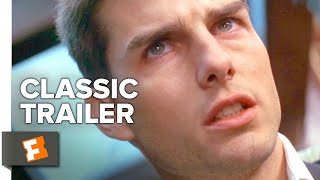
Cruz naturally did the stunt work, starting a trend that intensified in the sequels. Hanging upside down for hours seems like a small potato compared to clinging to an airplane during takeoff. But it was excruciatingly difficult to do so. Trying to hang parallel to the floor, Cruz kept leaning forward and hitting his face, so he stuffed £1 coins into his boots to balance himself in a horizontal position.
It was De Palma who came up with this sequence, inspired by a similar set in the 1964 film about the Topkapı heist. De Palma filmed the robbery in near-silence, another nod to Topkapı and a deliberate reaction to the apparent racketeering of other blockbusters. «All the action movies coming out were so noisy!» says Wagner. “What could have been done differently? Silence. There can be no sound in this sequence. Nothing could disturb the flow and atmosphere in this room. It was unique in itself, the concept of silence.”
Indeed, 1996's Mission: Impossible was a different type of blockbuster—a complex thriller with perspective-shifting plots—and a distinct departure from what the series is now. It's not that modern M:I is a bad thing. This is the most consistent and insanely inventive action movie ever. But even Dead Reckoning — already released — wore a hat and a rubber mask to the first film.
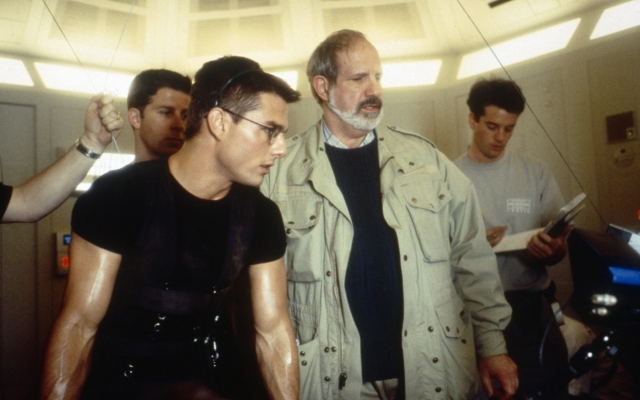 Tom Cruise on the Mission: Impossible set with director Brian De Palma. Photo: Alamy
Tom Cruise on the Mission: Impossible set with director Brian De Palma. Photo: Alamy
Mission: Impossible was the first film that Tom Cruise produced himself. It was also his idea. “Most of all I remember the conversation when Tom called me and said: “We are going to shoot Mission: Impossible – I love this show!” says Paula Wagner. “And I liked it too. Cruz and Wagner will also co-produce Mission: Impossible 2 and 3. Most recently, Wagner produced the musical Pretty Woman, which toured the UK later this year.
Back in the 1990s, there was a gold rush in Hollywood at old TV properties. Between 1993 and 1999, The Fugitive, The Maverick, The Saint, The Avengers, and The Wild Wild West were also filmed. It supplanted the current blockbuster formula. Nearly 30 years later, every blockbuster is essentially a rerun. “It was early to turn a TV show into a movie,” says Wagner. “Now it is done all the time. And that was before all the Marvel franchises. I think we were the pioneers in the development of “What is this? How does it work in cinema? What items are you saving? What are you changing and developing? It was more than making a movie. It was something more.”
But, unlike The Fugitive and others, Mission: Impossible didn't appear on the screen for very long. Paramount made an attempt to film M:I in the 1980s and brought the TV show back in 1988 with the original series star Peter Graves. When Tom Cruise first ripped off his rubber mask, M: I've only been off the air for six years.
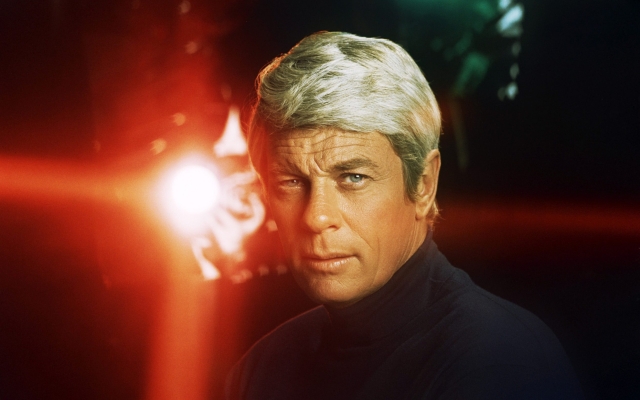 the original Mission Impossible. Credit & Copyright: Getty
the original Mission Impossible. Credit & Copyright: Getty
Cruz met Brian De Palma over dinner at Steven Spielberg's house. That same night, the actor went home and studied De Palma's films, deciding that De Palma was the right director to direct the mission. De Palma now seems like an unlikely choice to jump-start what the series has become: a Bond-like franchise based on Cruz's appetite for laughter in the face of danger. But the first M:I belongs to De Palma's series of meaningful genre paintings — Scarface, The Untouchables and Carlito's Way. De Palma readily accepted the role of director. “Because I was determined to be a huge success,” he said in a 2015 documentary about his films.
De Palma brought in David Koepp, who also wrote Carlito's Way. Koepp, who was a fan of the M:I show as a child, recalls De Palma calling while he was having lunch at a restaurant. There was no «your mission if you choose to accept it» sentence. De Palma got down to business. “Mission impossible, Tom Cruise,” he told Koepp. «I must see you in the morning.»
Writing the script was almost impossible. Koepp was fired and replaced by Robert Towne (screenwriter of Tom Cruise's macho racing car festival «Days of Thunder»). “It was like walking through the wilderness and blazing a new path,” Wagner says of the complex development. Then Koepp was brought back. At one point, DePalma had two writers in two different hotels, both working on the script at the same time — and the sets were being built without them knowing exactly what material would actually be filmed.
 Tom Cruise in Mission: Impossible. Image Credit & Copyright: Alami
Tom Cruise in Mission: Impossible. Image Credit & Copyright: Alami
One of the main challenges, according to Wagner, was: «How do you reimagine a Cold War television series for a mid-1990s movie?» Critics asked the same question before the film's release. The original IMF team operated in the shadow of the Cold War. Regular targets were dictators and shadow governments in fictional countries. Jon Voight's IMF chief Jim Phelps — a character played by Peter Graves on television — comments on his position after the end of the Cold War. “One day you wake up and see that the President of the United States is running the country without your permission. Son of a bitch, how dare he. Phelps admits that he is now just «outdated equipment that is not worth updating.» GoldenEye, released just six months earlier, similarly repositioned Bond for the 1990s, a Cold War relic.
Other changes were also needed. The series was about a team operation, with Phelps choosing his preferred agents at the start of each episode, each with their own special skills to carry out their part of the mission. De Palma not only broke convention, he also had to make the M:I the star car for Cruise. «The first thing we have to do is kill the whole team,» De Palma said.
The film opens like classic sequences: Phelps receives his mission (which he naturally chooses to accept) via self-destructing tape, then assembles his team and plans the mission. They need to get a list of CIA agents from a target in Prague. But this is a setup. The team, including Emilio Estevez and Kristin Scott Thomas, are killed one by one. This is De Palmian's rich material: a dizzying whirlpool of deceit and murder, shrouded in a thick fog of betrayal. “You make the rules and turn them on their head,” says Wagner. “You think you have a mission team and then they all die at the very beginning! It's just that when you think things will work out a certain way, they don't.”
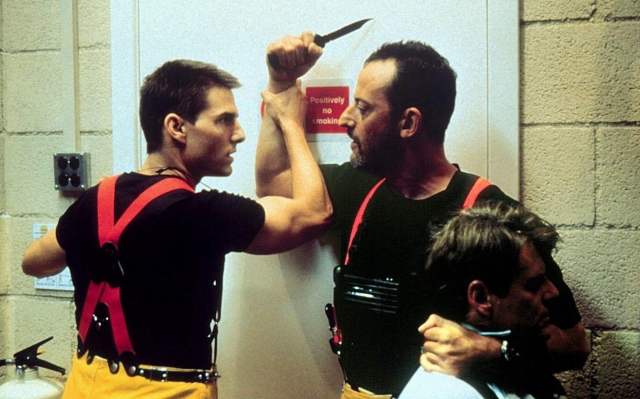 Tom Cruise and Jean Reno in Mission: Impossible By Alami
Tom Cruise and Jean Reno in Mission: Impossible By Alami
Martin Landau, who played master of disguise Rollin Hand on the show, turned down the role in an earlier version of the movie because the team was supposed to die. «Why willingly drive our characters to suicide?» he said in 2009.
Hunt — seemingly the only survivor and exposed as a mole — is on the trail of a real traitor. He is assembling a new team of disavowed agents, played by Jean Reno and Ving Rhames. Rhames' character was supposed to die, but he asked Koepp, «Why does a black guy always have to die?» Reims saved his character, hacking expert Luther Stickell, and secured himself the lead role in six more films.
It is shocking, as it turned out later, that Jim Phelps — the leader of the team since the second season of the TV show — is actually a traitor. The decision to make Phelps the bad guy angered the cast of the television version. However, Peter Graves was kind. He said he wasn't offered the role, but if he had known that Phelps was a villain, he still wouldn't have accepted. «I don't think I could bring myself to play him as the bad guy,» Graves said. Phelps' betrayal was highlighted by outraged reviewers, debunking both Phelps' cover and the movie's big twist — the kind of thing that, without spoilers, will cause a crash in 2023.
The action of 1996 now seems relatively low-key — unlike Cruise running around the Burj Khalifa at least at 2,700 feet — though the movie still hangs on three stunt sequences: a CIA headquarters robbery, a bullet train brawl, and Cruz jumping away from an exploding fish tank — a neat, watery twist on a standard explosion jump. Cruz did the trick himself, jumping literally from a ton of water, which required precise timing.
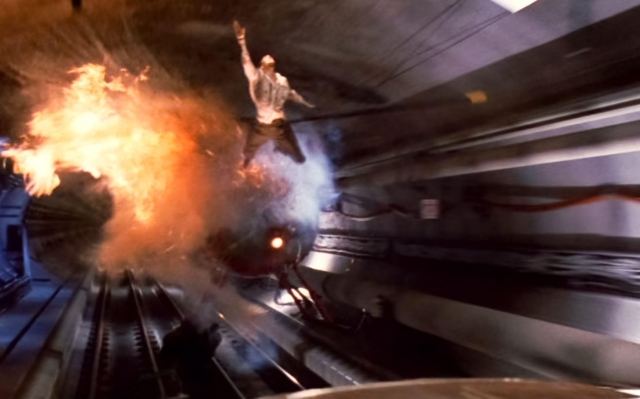 Tom Cruise in Mission: Impossible Credit: Alami
Tom Cruise in Mission: Impossible Credit: Alami
But Mission: Impossible is an extraordinarily smart action movie. In later sequels, the trademark hoaxes and trust gimmicks are played as standard pieces—usually punctuated by blowing the mask open with an air punch. In the first Mission: Impossible, deceit is the fabric of the entire film. It confuses viewers at almost every turn — the constant unraveling of misdirections, one revelation after another.
The twisted plot is not for everyone. After the film's release, DePalma called Koepp and said that the one-word rumor about him was «Unfathomable!»
In the smartest scene, a resurrected Phelps Vojta tries to trick Hunt with an elaborate lie about how the failed mission in Prague ended. Phelps gives his version of events, but we see something completely different — Hunt finds out what really happened. He knows that Phelps orchestrated the deception. «If you watch DePalma's films, you'll see that his characters are not exactly what you imagine them to be — often the appearance is at odds with who they really are,» Wagner says of the episode. “That was another aspect that Tom and I really appreciated and supported as producers. Not only sleight of hand in terms of action, but none of the characters were exactly who you thought they were.» >
The film forgoes smarts for the final showdown. Phelps and Hunt battle the train as it speeds through the Channel Tunnel, while Jean Reno gives chase in a helicopter. The new M:I film Death Wage also features a train fight, one of the many sevenquel references to the first film.
The original train collision is still a thrilling action. It kind of puts you right in the train cars — the feeling that you're clinging to life just by watching it. When the classic Lalo Schifrin theme kicks in, and the helicopter's propeller blade passes just a few inches past Cruise's throat, it's sure to take your breath away.
Cruise and DePalma debated whether to include a train-helicopter scene. Cruz and Robert Town, according to De Palma, insisted that the film end with the opening of the mask in the boxcar. De Palma later denied reports of a rift between the two, although they had a strong creative relationship.
«Tom is a very smart guy and he had very strong opinions about things,» DePalma told Premiere magazine. «We argued, but he always said, 'Do whatever you want, Brian.' I made all the final decisions. We were deciding if we needed a helicopter chase at the end. Tom thought about resolving the boxcar scene. I insisted on chasing the helicopter. I said, «We're doing Mission: Impossible.» It would be better if we ended with some pathos. I argued a lot about why I thought it would work, and in the end I think he made the right decision.”
Cruz definitely didn't hesitate to take this train. He climbed into the carriages of Pinewood Studios in front of a blue screen and was fired on by industrial force fans. “It's really Tom, standing in a train car, and the wind is blowing in his face at hundreds of miles per hour. Trust me,” Wagner says. “It was very dangerous to jump from one moving car to another when the wind was blowing right at him. We did it on the biggest stage in Pinewood. It was very difficult. He would have been on a real train all this time if he could.»
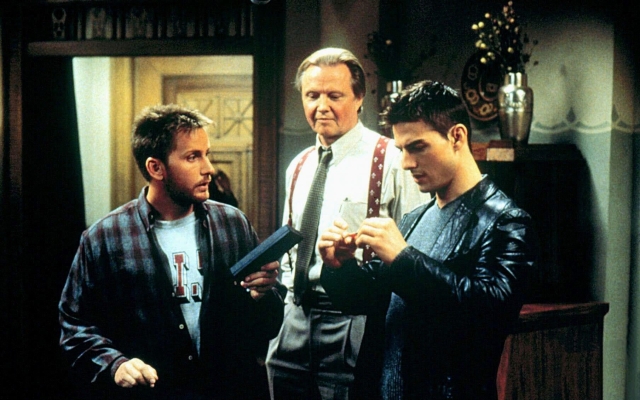 Emilio Estevez, Jon Voight and Tom Cruise in «Mission Impossible». Credit: Alami
Emilio Estevez, Jon Voight and Tom Cruise in «Mission Impossible». Credit: Alami
De Palma achieved what he set out to do. Released on May 22, 1996, Mission: Impossible was the biggest hit of his career, earning $450 million worldwide. «It's better to shoot them at the end [of a career] than at the beginning,» DePalma told Wade Major about making the hit film.
Wagner attributes his global success, in addition to being a great movie, to M:I thanks to its international cast and smart promotion. “We treated Mission: Impossible as a worldwide event,” she says. “This was an innovation in global marketing because we focused on individual overseas markets rather than treating the international box office as a monolith. We approached the rest of the world with the same zeal as we approached the interior.» Paramount sent out a booklet of promotional ideas to movie theater managers suggesting—quite brilliantly—helicopter flights or skydivers in the movie theater parking lot for extreme useless PR. (I must have missed it at our local Odeon.)
The idea behind the original sequels was that each one would be directed by a different director and fit their style. Mission: Impossible 2, directed by John Woo, is undeniably a John Woo movie. Cruise's collaboration with Christopher McQuarrie (who co-wrote Ghost Protocol — i.e. M:I 4 — and has since written and directed every Mission: Impossible) turned the series into arguably the greatest spectacle in action films — the only the series that Bond has ever given is a real race for your money.
But, like Tom Cruise at CIA headquarters, the first Mission: Impossible hangs quietly in the center — the brains and cunning of the operation. “Making Mission Impossible was a mission impossible for us,” says Paula Wagner. “But we made it!”








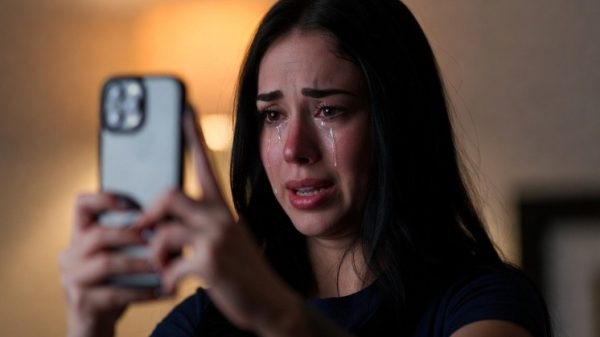
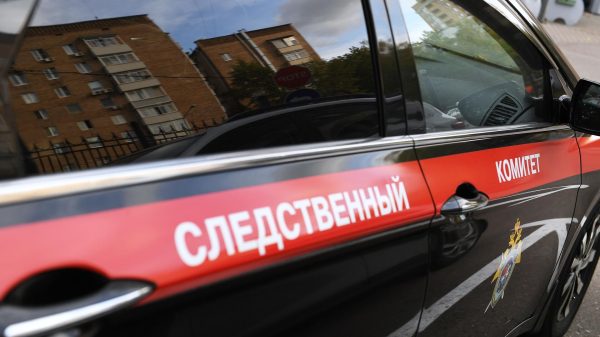
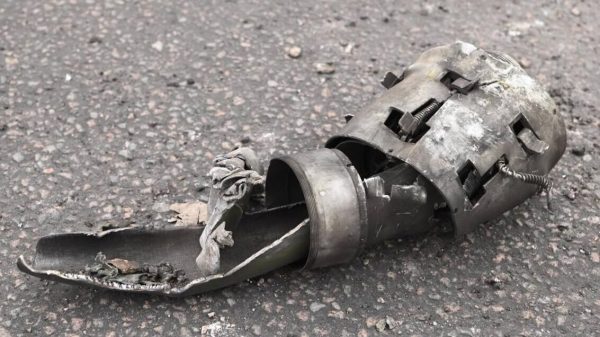
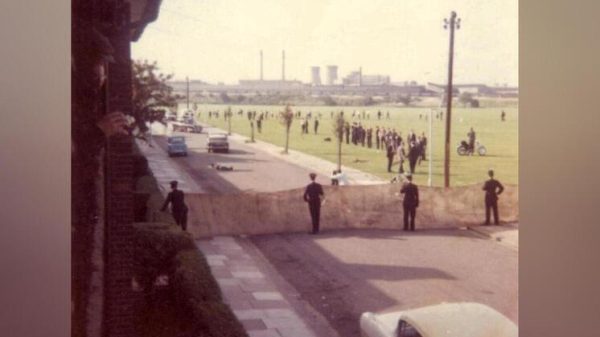
























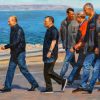

















Свежие комментарии